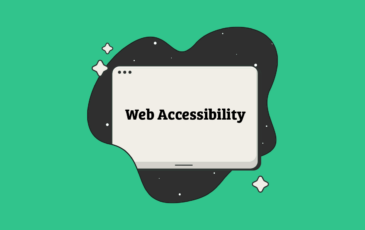 Article
Article
Top online collaboration tools for designers and developers
To launch a successful project, designers and developers have to work together. This collaboration will result in better ideas and a more usable final website design.
The hard part?
Actually making that happen.
Thankfully, there are plenty of tools available to help make this collaborative process a lot easier, more intuitive and functional. Let’s take a look at some of our favorites for every stage of a project.
Planning and research
Draw.io
Draw.is is ideal for creating workflows and developing mindmapping. The tool helps you create flowchart-style diagrams that you can save with the team in other collaborative tools such as GitHub, Dropbox or right to a shared location on your network.
It works for teams because anyone and everyone can hop right in and use it to sketch out ideas. Think of it as a giant notepad for the team. Designers and developers can add ideas on their own schedules whenever they have something to contribute.
Evernote
Evernote is one of those tools that most people know about, but don’t fully take advantage of its functionality. Evernote as a team tool is ideal for creating moodboards, scanning in sketches so that everyone has access to them and even uploading project briefs or files so that everything is in one location.
To make the best use of Evernote, each project should be contained within a notebook. Then individual notes are saved as “living” documents that can be updated and changed as the project evolves.
This tool will make it easy for everyone on the team to know exactly what is happening and where the project stands. (Users can even create checklists to mark progress in projects and get notifications about file changes.)
Google Docs or Dropbox
Google Docs and Dropbox are file sharing platforms that live in the cloud so that designers and developers can store everything related to a project in a location that everyone else can access. Create project folders with appropriate subfolders for media files, content and more. This is the location where the actual work product lives.
And this is why these tools are so awesome. All you have to do is share the top level folder (named by project) with everyone who is working on it and then anyone can add and change folders and documents therein for an easy to manage project filing system.
When it comes to teams, Google Docs and Dropbox are nice because users can work from anywhere. (Telecommuting is so common these days and users can be added or removed with just a few clicks.)
Project management and communication
Trello
Every team aspires to manage projects in the agile Kanban style. Trello is a tool that can turn a messy workflow into a series of project milestones. The software uses boards, lists and cards to help organize projects in a user-friendly format.
To make the most of it, use columns as project milestones. These are some of the big events in the project, such as showing prototype to the rest of the team. Each card therein is a task within the project that different team members can work on independently (you can even assign names to them).
With a tool like this, designers and developers can see what they are working on and how it relates to the work of the rest of the team. There won’t be any worries of everyone working in bubbles and causing team-wide delays.
Slack
Quit sending – and losing – so many emails. Slack provides a streamlined method of project-based communication to help keep everything in order.
Create a Slack channel for each project, add team members and use that channel to just share messages and files about the project. That way every conversation is tracked in a way that you can go back and look at and there’s no email shuffle.
Design
Sketch
Sketch is rapidly becoming the design leader when it comes to web-based projects. While there’s still a lot of design happening in Photoshop, it doesn’t provide the same level of functionality as Sketch for web apps. This infographic provides a fun breakdown of the tools.
Design Grid Overlay
Ensure that the grid is exactly as it should be with this nifty Chrome add-on. Everyone on the team and add the tool, use the same settings and ensure that the base grid is uniform. This makes thinking about different sizes or scales a little easier to visualize.
The grid overlay encourages team communication as well in that all users can actually see how some early choices about space might actually work on different devices and in different environments. The best part is that you can see all this information early in the process so that no one is surprised later when the design is close to finished.
Invision
Invision is a prototyping and collaboration web app. What it does for teams is allow everyone to see a design come to life. No more flat prototypes with this tool, users can see and show animations, gestures and transitions so users can click and see how designs will really work.
Too often there’s a disconnect between what the designer sees and what the developer does at this stage. This app allows those lines of communication to come together so that everyone is on the same page before the design gets past the designer-developer team.
Handoff
The designer to developer handoff is a vital part of the process. Too often, it is problematic. From a lack of communication between teams, to misunderstandings about the design’s intent, this transition is known to cause a lot of unnecessary stress on the entire team. But there are plenty of tools available just to help with this transition.
From using the right tools to understanding file management and packaging, plus some neat add-ons and tools for making it all easier, see “How to Organize Your Design Files for the Perfect Developer Handoff.”
Development
Ngrok
Ngrok.io allows a developer to publish his/her local development environment to the web for designers to see progress. (Boom! This is what teams have been looking for.)
Everyone can demo the website and mobile apps without actual deployment in a local environment.
This opens lines of communication on the team, so that everyone can make sure the project looks and behaves as intended. Designers and developers can provide feedback about functionality and do QA testing before launch.
Google Sheets
Use a Google spreadsheet to mark revision requests in a single place. At the end of the day, it’s all about staying organized. It’s about maintaining communication methods and channels that are easy for everyone on the team to use.
Google Sheets are robust, easy to create and design and users can see what changes were made and what users made them. Encourage team communication with team-based tools. You’ll be amazed at how much more efficient all members of the team are and how much more designers and developers collaborate.



